Historical Architecture of Grosse Pointe – The Lost Estate of Sunnycroft

Last week we explored the work of Frank A. Miles. He designed close to 20 homes that we know of, throughout Grosse Pointe between 1926 and 1948. Much of his work is on some of Grosse Pointe’s more noted streets such as Provencal, Lothrop, Touraine, and Renaud.
This week we return to the lost estates to present 70 Moran, also known as Sunnycroft. William F. Goodrich designed this beautiful property, in 1919, for Mrs. William K. Anderson.
As the photos below demonstrate it is a superb residence created in an English Cottage style. This approach was popular in many areas of the United States from 1915 to 1940, from small homes to grand manors. Typical characteristics associated with this approach include an asymmetric configuration, a steeply pitched roof, large flat chimneys, arrangements’ of tall narrow windows, and multiple smaller windows (in bands). There are many fine examples of English Cottage style homes throughout Grosse Pointe. Images courtesy of: Michigan Architect and Engineer, Volume 2, 1920.
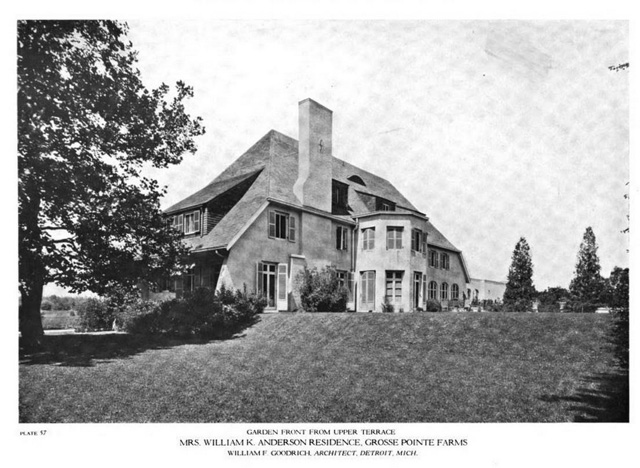
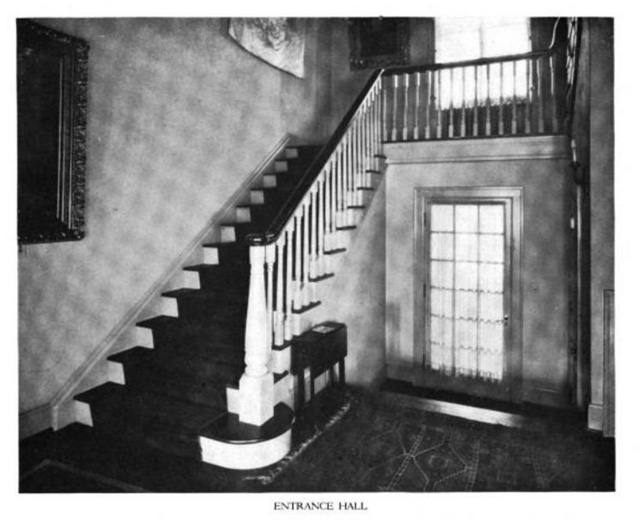
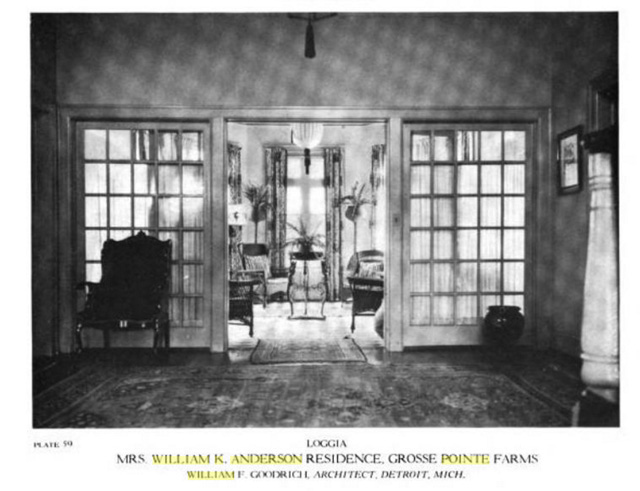

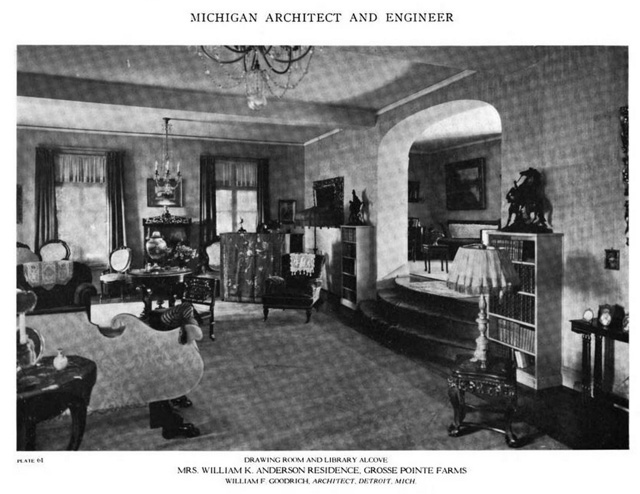
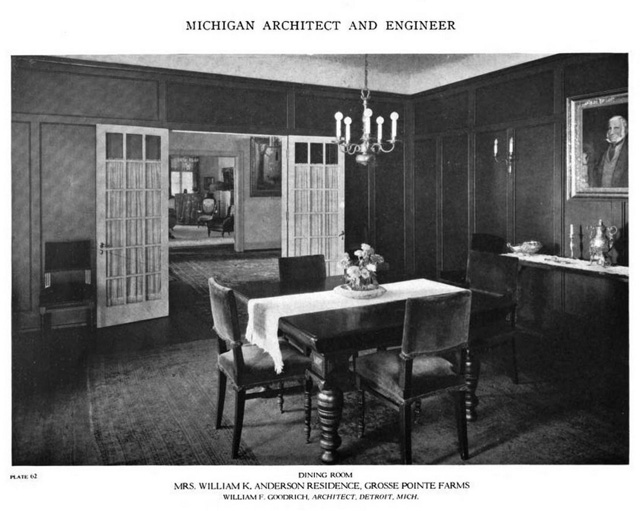






70 Moran is a particularly nice example. The interior of the home features many wonderful hand crafted details including wood paneling, large decorative fireplaces, and beamed ceilings. The formal garden was also rather impressive. An upper terrace at the front of the residence featured an abundance of large trees, while a more formal lower terrace – with a pond, well-kept borders, and beautiful lawns – created a stunning landscape at the rear of the home. The garden is an excellent example of some of the large, beautiful gardens that could be found throughout Grosse Pointe during that era. Despite several nationally renowned landscape architects coming to work in Grosse Pointe at this time it is not clear who designed the gardens at 70 Moran. Images courtesy of: Michigan Architect and Engineer, Volume 2, 1920.
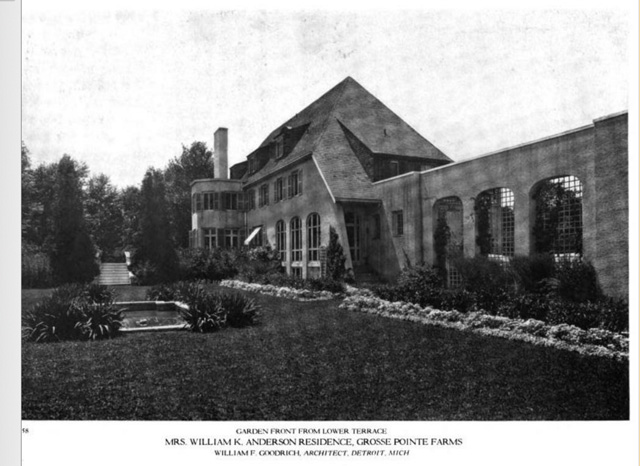
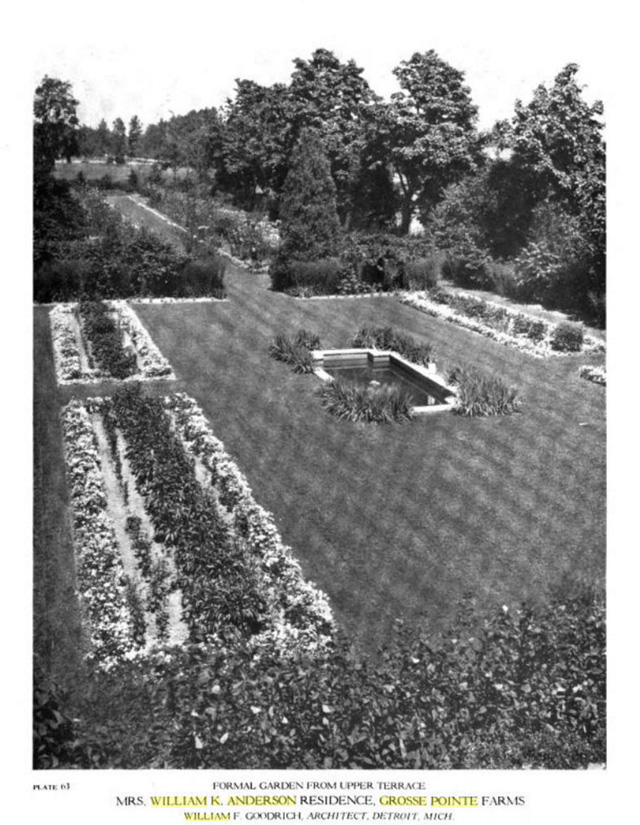


We do not know how big Sunnycroft was – the house, or the lot – however it appears it was partly demolished in 1946, followed by complete demolition in 1957. It is now the location of a new residence, and two homes on Moran Court. Many of the large trees still exist from the estate, between this area of Moran, and the adjacent part of Merriweather.
Mr. William Kyle Anderson was born in Owensboro, Kentucky in 1847. He was educated in his hometown, and then attended Michigan University, graduating in 1868. He completed his education at the University of Berlin. In 1970 he married Cornelia M. Cook from Detroit, and began a career as a cashier at a savings bank in Owensboro. In 1877 he returned to Detroit as manager of the Detroit Seed Co, and subsequently became a director at several companies, owned by the Newberry-McMillan corporations. He then went onto the position of first vice-president and director of the Detroit Savings Bank, along with being associated with Senator McMillan and John S. Newberry. Between 1897 and 1899 he was the American Consulate in Hanover, Germany. Mr. and Mrs. Anderson had a daughter. They were married for 39 years, until Mr. Anderson’s death in 1909.
Mrs. Anderson commissioned William F. Goodrich to build Sunnycroft. Mr. Goodrich was a man of many talents. While there is very little written about him, personally or professionally, we understand he had an office in Detroit and worked on numerous projects – from creating plans for an enormous 800 room hotel in Grosse Pointe Shores, in 1914 (an article from Electrical World, Volume LXIII – January 3 to June 27- reports ‘plans were being prepared by architect William F. Goodrich for the construction of a summer residence, which required a power plant to be constructed in connection with the hotel’) through to designing several homes in Grosse Pointe, with varying architectural styles. These include:
- 70 Moran (Sunnycroft) – 1919
- 115 Lewiston – 1919

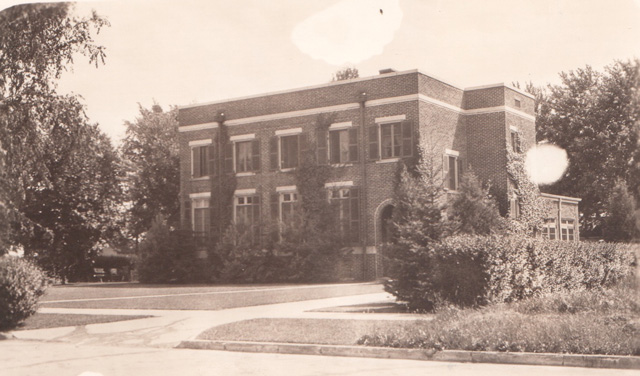
- 87 Lewiston – 1919. The home was featured in an article in the Detroit Free Press. The article describes the home as ‘following simple, yet artistic lines’, with ‘the interior of the house designed to facilitate efficiency in housekeeping’.

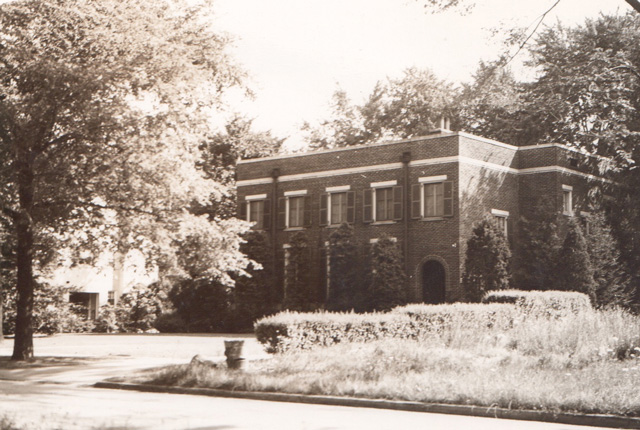
- 515 University Place – 1924

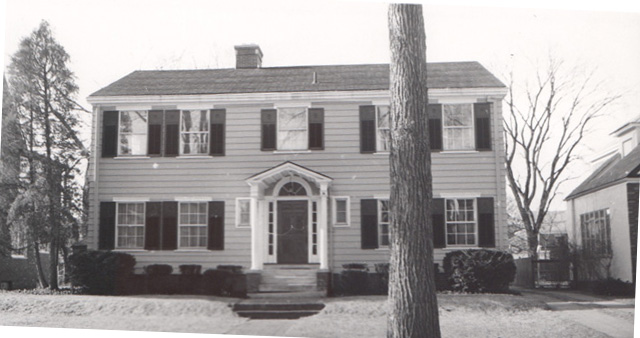
- 1325 Bedford – 1924


- 961 Westchester – 1925
- 875 Pemberton – 1935


Goodrich’s style evolved with the architectural trends of the particular era(s). Aside from drawing up plans for an enormous hotel in 1914, he designed a large formal residence in the early part of the 20th century, created two innovative homes with ‘artistic lines’ on Lewiston, along with adding some classic colonial homes throughout the community. This was a man with a deft touch for developing something out of the ordinary.
Sadly ‘Sunnycroft’ has now gone, but as you drive past the corner of Moran and Grosse Pointe Blvd, take a close look and you might catch a glimpse of some of the magnificent trees that once graced the estate.
*Photos courtesy of the Higbie Maxon Agney archives unless stated.
Written by Katie Doelle
Copyright © 2019 Katie Doelle

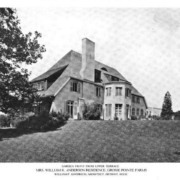

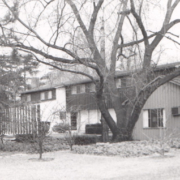
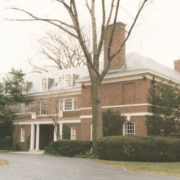



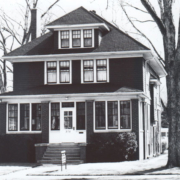
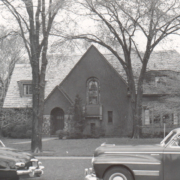
Leave a Reply
Want to join the discussion?Feel free to contribute!